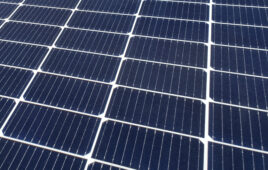 A recent report from the Public Service Commission found solar energy can provide Maryland $1.39 billion in labor revenue and over 13,800 direct jobs by 2028. The Maryland-DC-Delaware-Virginia Solar Energy Industries Association (MDV-SEIA) found the report provides an essential analysis of the impact solar generation can have on the electricity grid and state economy.
A recent report from the Public Service Commission found solar energy can provide Maryland $1.39 billion in labor revenue and over 13,800 direct jobs by 2028. The Maryland-DC-Delaware-Virginia Solar Energy Industries Association (MDV-SEIA) found the report provides an essential analysis of the impact solar generation can have on the electricity grid and state economy.
The report was part of the PSC’s Public Conference 44 (PC 44), which aims to study how Maryland’s electric grid can be more reliable and flexible. Daymark Energy Advisors, a utility consulting firm, was selected to conduct an analysis using data from Maryland’s four investor-owned utilities (IOUs) and Southern Maryland Electric Cooperative (SMECO).
Tony Clifford, chief development officer of Standard Solar in Rockville, remarks, “The Public Service Commission’s most recent report shows the real potential to power Maryland economically into the future with solar energy as a significant resource. Recognizing the true value of solar brings clarity for all Maryland ratepayers across the state.”
The report found solar provides between $0.05 – $0.011 per kWh in avoided energy, capacity and transmission investments. Health benefits and non-monetized carbon dioxide benefits add additional $0.01- $0.02 per kWh. Daymark calculated that an additional 2.4 GW of solar—or 2.5 times Maryland’s current installed capacity—would create over 13,800 direct jobs and $1.39 billion in labor revenue over the next ten years.
“Over 40% of Maryland’s electricity comes from out of state,” notes Rick Peters, president of Solar Energy Services. “When our customers go solar, they are not only locking in local, clean electricity, but supporting Maryland’s 5,300 solar workers. These are jobs that cannot be exported.”
MDV-SEIA found Daymark’s estimate of labor income on the conservative side. Daymark calculated solar yields $163 of labor income per kilowatt (kW) installed, meaning the average new solar home provides $1,600 in labor income in Maryland. However, in 2018 the National Renewable Energy Laboratory (NREL) calculated in 2018 the install labor for a residential project is $270 per kW, translating to $2,700 per residential rooftop.
“NREL’s analysis, corroborated by Maryland installers, indicates Daymark’s report is conservative when assessing the labor associated with solar. Using NREL’s calculation, the estimated labor income could rise to over $1.8 billion,” says MDV-SEIA executive director David Murray, “Further, panel installation is just one facet of the industry. The solar supply chain consists of engineers, project managers, hardware manufacturers, electricians and sales associates. By growing our state solar economy, we can provide a diversity of careers for Marylanders.
Daymark cited that increased solar deployment would provide $2.11 billion in Gross Domestic Product and $146 million in state revenue. As larger solar projects provide personal and property tax revenue, counties can diversify their income stream by encouraging solar deployment. “Over 70% of Fortune 100 companies have a renewable energy procurement target,” observes Adam Thompson, VP of development at Urban Grid, a solar developer based in Stevensville. “Making Maryland friendlier to clean energy deployment is a smart way to show the state is open for business.”
The Value of Solar report highlights why legislators should pass the Maryland Clean Energy Jobs Act (MCEJA) in 2019. The MCEJA—which was co-sponsored by a majority of Senators and Delegates in the General Assembly last year—would increase the amount of renewable energy the state is required to buy from 25% by 2020 to 50% by 2030. The Act calls for nearly 15% of Maryland’s electricity to come from solar energy by 2030.
News item from MDV-SEIA





Tell Us What You Think!